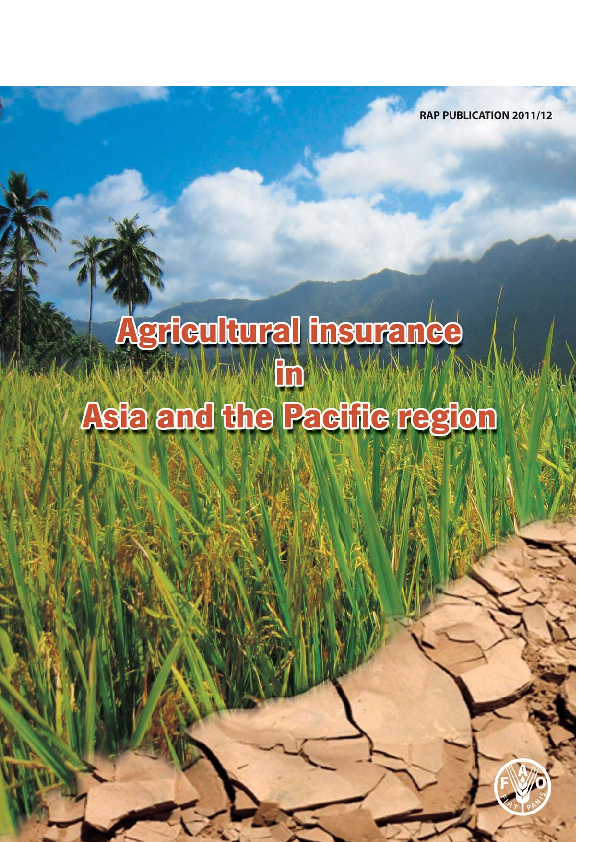Agriculture Insurance in Asia and Pacific Region

Asia and the Pacific region has one of the highest exposures of any region in the world to natural hazards including typhoons, floods, landslides, droughts, earthquakes, volcanic eruptions and tsunamis. Weather-related risks, particularly hurricanes, flooding and drought, are a frequent occurrence and affect crop yields, livelihoods and assets, and the personal safety of vulnerable groups across the region. The frequency with which these disasters occur often taxes the ability of such groups to rebound quickly, increasing their risk of hunger and malnutrition. Low-cost agricultural insurance schemes are increasingly viewed as mechanisms for providing social protection to the increasing numbers of people affected by such risks and in helping to lessen the impacts they suffer owing to such shocks.
Agricultural insurance systems in the region range from major public sector programmes of India and the Philippines through to public-private partnerships in China and the Republic of Korea and finally to purely private markets encountered in Australia and New Zealand and non-formal private mutual and community-based crop and livestock initiatives in Bangladesh, India and Nepal.
This publication is based largely on the outcome of a study commissioned by FAO to provide a comprehensive up-to-date review and assessment of different models of agricultural insurance provision in Asia and the Pacific region, together with guidelines and recommendations to policy-makers seeking to introduce agricultural insurance programmes.
Information presented in the publication is based on data collected through field visits of the author to four countries in the region – China, India, Indonesia and Thailand – and draws on the experience of the insurance programmes in other countries of the region. The information is presented in a comprehensive but easy-to-read format that allows direct comparisons to be made between countries. The document also provides valuable insights into the sustainable implementation of insurance programmes.
This publication provides the basis of FAO’s future work on capacity building on the subject of agricultural insurance in the region. It is hoped that the information presented in this publication provides a useful basis for countries in developing their policies and programmes on the subject.
